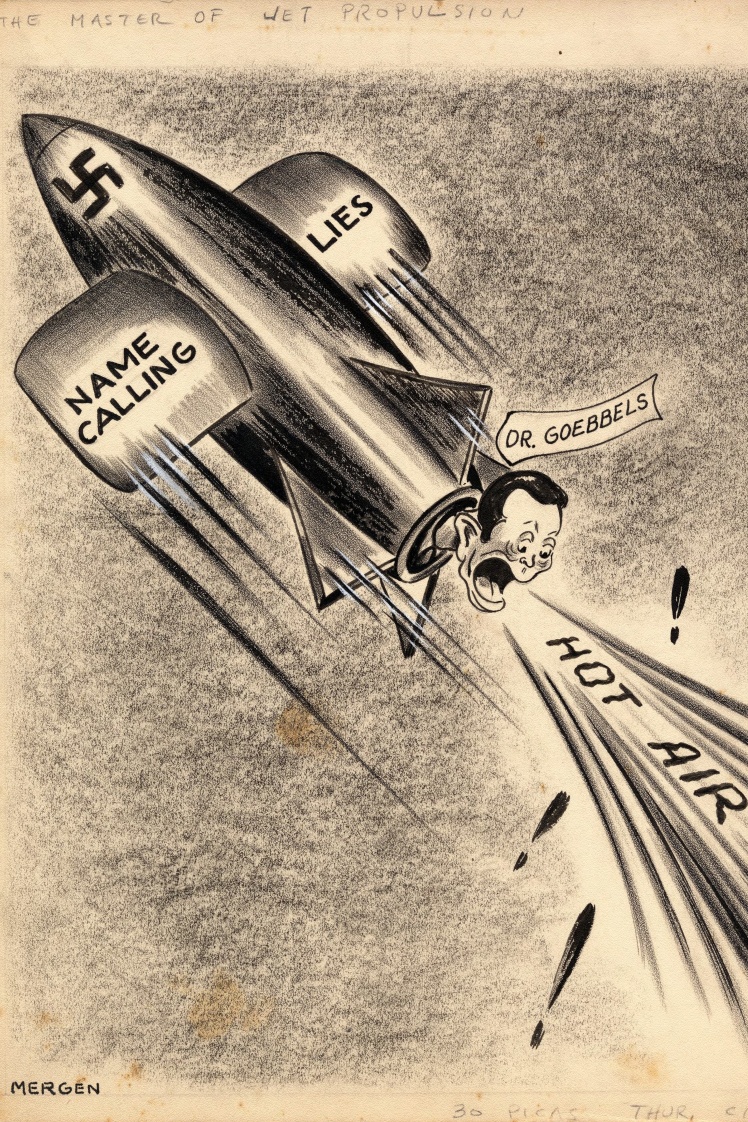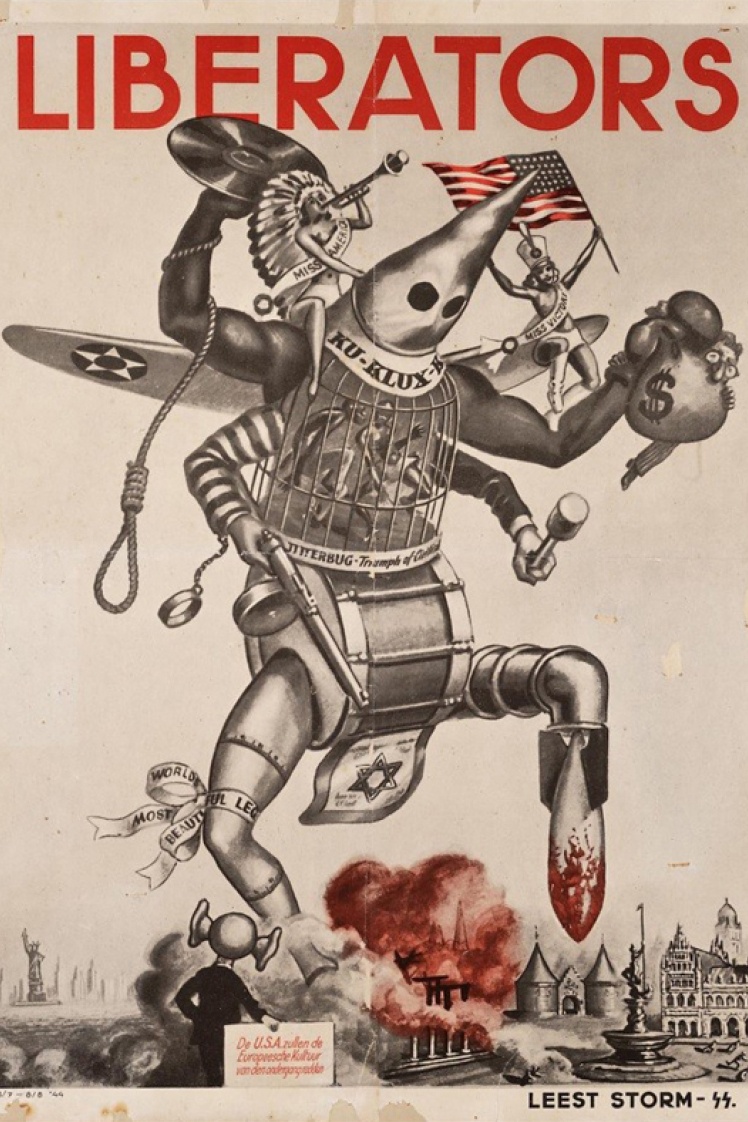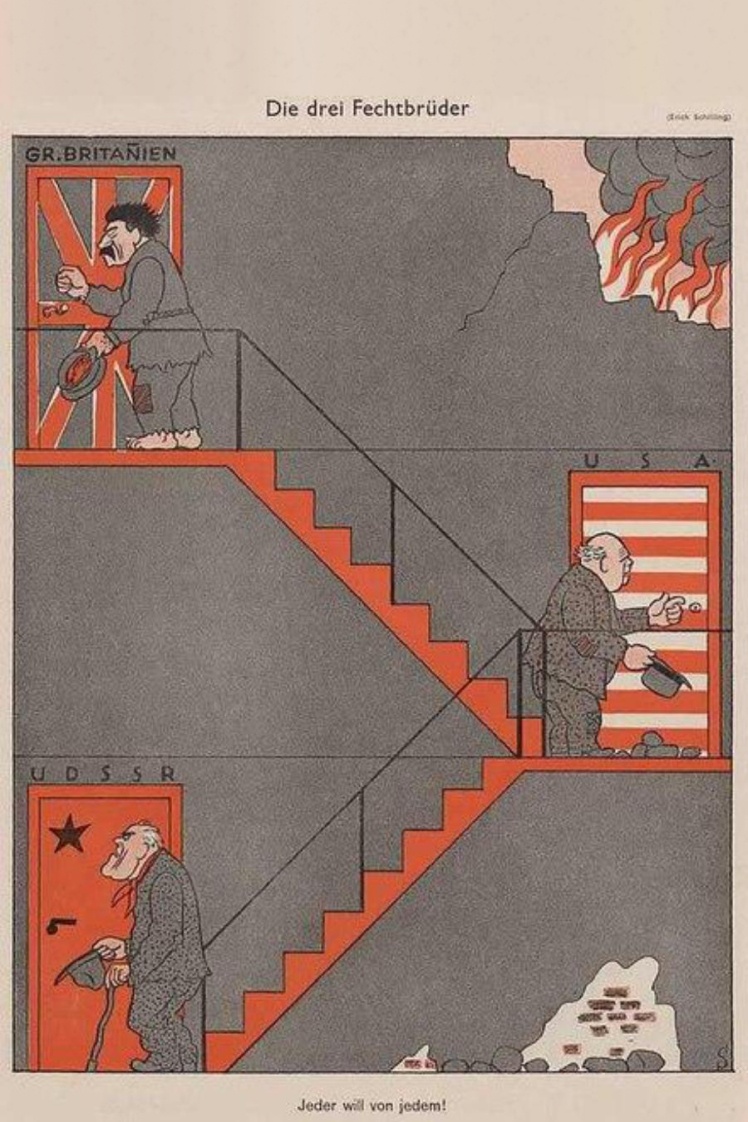Satirical cards were still used as a legacy from the previous world war, although they were no longer so widespread. In the photo: French map-caricature of the beginning of the Second World War in September 1939. It shows how Germany invaded Poland from one side, and the USSR from the other.
davidrumsey.com
On August 23, 1939, Germany and the USSR signed the Molotov-Ribbentrop Pact, to which a secret protocol on the delimitation of spheres of interest and zones of occupation in Europe was added. In caricatures, it was depicted as the marriage of the leaders of the two aggressor states — Hitler and Stalin. Pictured: The British cartoon from 1939.
catalog.archives.gov
The American cartoon regarding the 1939 Molotov-Ribbentrop Pact.
catalog.archives.gov
The American caricature about the Molotov-Ribbentrop pact. On the branch from left to right: pro-fascist Spanish dictator Francisco Franco, Italian fascist leader Benito Mussolini, Japanese general Tojo Hideki, and American communists.
catalog.archives.gov
The British cartoon from 1940 showing Hitler and Stalin marching together, wearing the same boot and holding a pistol in a holster.
nationalww2museum / «Бабель»
The British cartoon from June 17, 1941, with the inscription: "Hitler wooed Stalin... but with large forces stationed right on Russiaʼs doorstep". In five days, Germany attacked the Soviet Union.
nationalww2museum / «Бабель»
In 1940, Stalin occupied Latvia, Lithuania, and Estonia, forcing them to join the USSR at gunpoint. These are American cartoons about the "voluntary" accession of the Baltic states to the USSR.
catalog.archives.gov
In the autumn of 1939, the USSR invaded Finland, expecting a quick victory, but suffered huge losses. These are American cartoons about the Soviet-Finnish Winter War.
catalog.archives.gov
In the summer of 1941, Germany turned from an ally into an enemy of the USSR. In Soviet caricatures, Hitler began to be compared to Napoleon, as well as German Emperor Wilhelm II during the First World War. This is Soviet caricature from 1941.
After Germanyʼs successes in Western Europe and on the Eastern Front, Britain and the United States were forced to unite with the Soviet Union to defeat Hitler together. This is the British caricature from that time.
The Soviet propaganda poster of the final period of the Second World War.
Another popular target for cartoonists was chief Nazi propagandist Joseph Goebbels. In this British cartoon from 1940, in which Goebbels instructs Mussolini: "Surely, itʼs pretty simple! You multiply your gains by 10 and divide your losses by 20; and shout as loud as you can."
nationalww2museum / «Бабель»
During the Second World War, women finally began to break into the world of political caricature. The first and most famous was the American Ann Mergen. Pictured left: Mergenʼs 1940 caricature of Goebbelsʼ false propaganda. Pictured right: Mergenʼs September 26, 1943 cartoon "Time to Send Those Overseas Parcels" with two swags, one for Hitler and one for Japanese General Tojo Hideki.
library.osu.edu
German cartoonists during the Second World War, for their part, made fun of the USSR and its allies. Pictured left: The German cartoon from 1944, depicting an American monster in a European city. In the picture on the right: The German caricature of the USSR, the USA, and Great Britain "Three beggar brothers. They ask each other for handouts."
1943 was a turning point on key frontlines in favor of the anti-Hitler coalition, and in 1944 a second front was opened in Western Europe, after which the defeat of Germany became almost inevitable. Pictured left: The British cartoon from 1943 showing Hitler looking into the future and seeing Roosevelt, Churchill, and Stalin deciding the fate of the post-war world. Pictured right: A 1945 English cartoon of Roosevelt, Churchill, and Stalin visiting a wounded globe in hospital, asking: "And how are we feeling today?"
nationalww2museum / «Бабель»
The Soviet caricature of 1946 of the Nuremberg Tribunal of Nazi war criminals, some of whom were sentenced to death.
During World War II, the Americans dropped atomic bombs on the Japanese cities of Hiroshima and Nagasaki. This was the first and so far the last time nuclear weapons were used. This is the 1947 Pulitzer Prize-winning US cartoon "Peace Today" about the dangers of nuclear weapons.
catalog.archives.gov
After World War II, the USSR quickly quarreled with its allies and turned into the main threat to the West. Pictured: British cartoon from 1947 showing Stalin trying to expand spheres of influence in Western Europe.
davidrumsey.com
Translated from Ukrainian by Olya Panchenko.
The threat to the world from the Kremlin remains today. And caricatures-memes help to fight it again. And Babel can be helped by your donation: donate in hryvnia 🔸 in cryptocurrency 🔸 Patreon 🔸 PayPal: [email protected].








